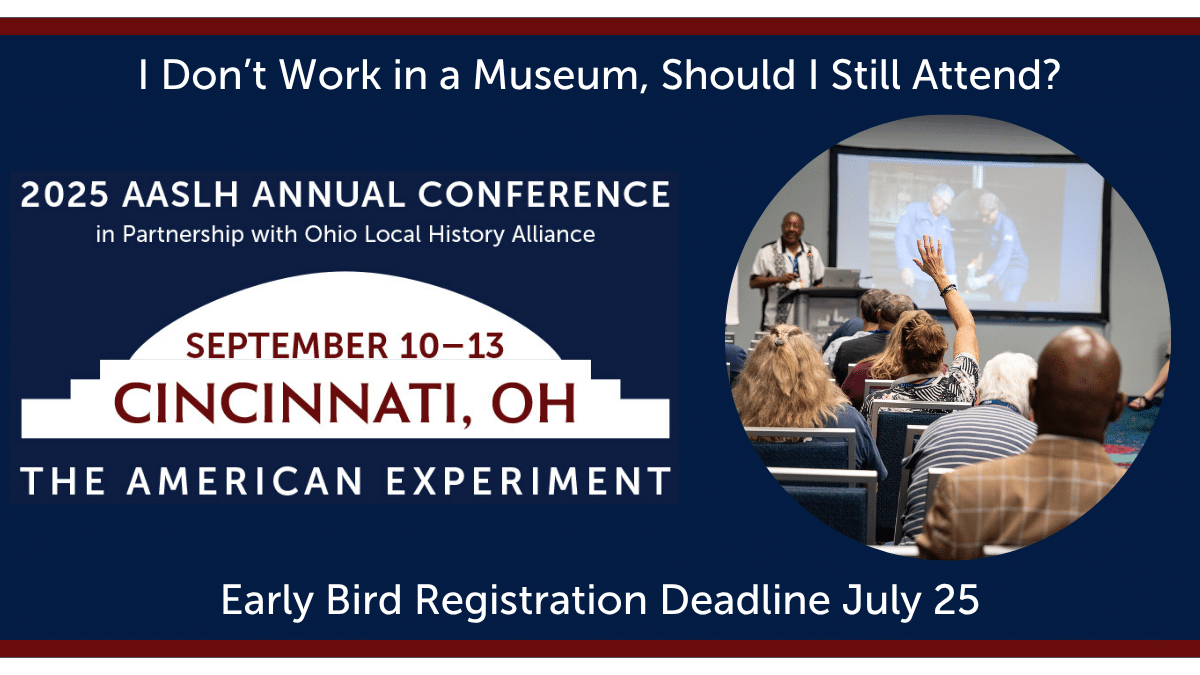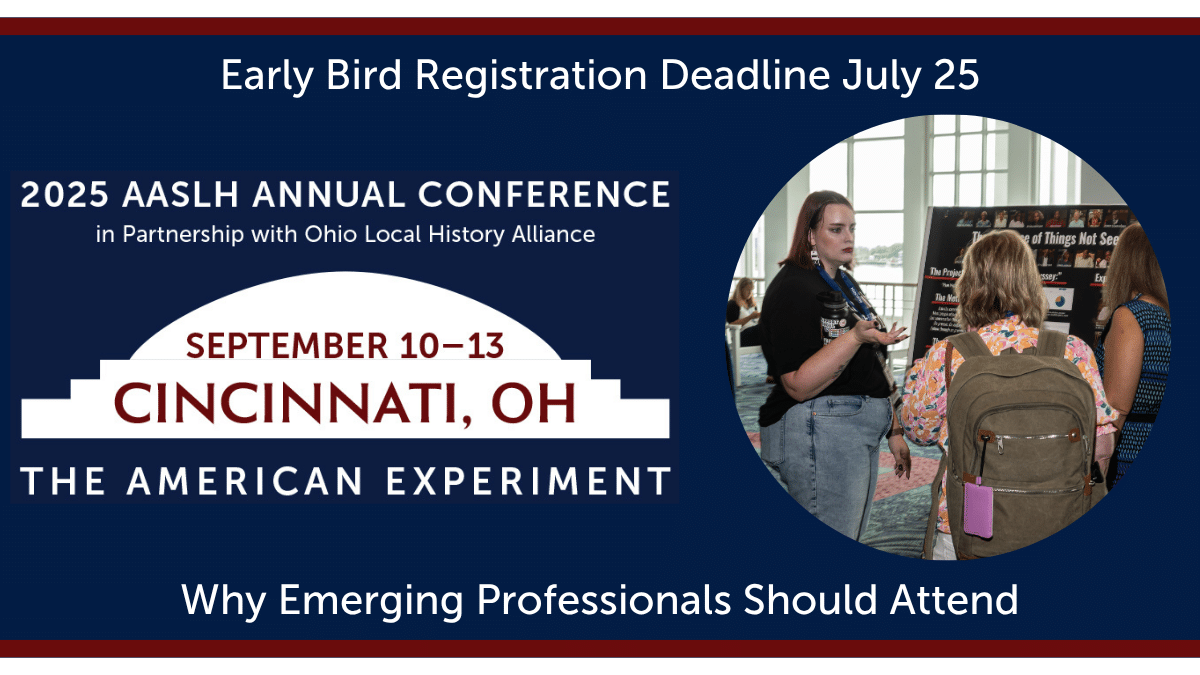
By Alexandra Rasic, Director of Public Programs, Workman and Temple Family Homestead Museum
As summer comes to a close, many of us are thinking back to vacations we enjoyed or recovering from a busy tourist season at work (maybe both!). The Homestead Museum where I work is a historic site located a little over fifteen miles east of downtown Los Angeles, not in an area frequented by tourists. We are in the City of Industry, which is just that: a city dedicated to industry. About two hundred people live here, and about 80,000 come in and out to work every day. While the City is surrounded by diverse, long-standing communities, we struggle to engage them.
Recent off-site evaluations in our surrounding communities confirmed a lot of what we felt we knew. A little more than 40% of the people interviewed said that they aren’t interested in visiting the Homestead because they don’t like history. The h-word, as we sometimes call it, is a barrier to visitation (as is our location), so we are always thinking of different ways to explain who we are and what we do. We’re not abandoning history; we’re just trying to get people to understand that history is about much more than “the past.”
History organizations need to do a better job of letting people know that we want to be places that enable and inspire them to make their own meaning. One way to do this is to acknowledge that visitors have needs and wants, too, such as providing experiences for children, nurturing an interest or curiosity, wanting to have a choice in how they experience a place, and simply having fun with family or friends.
As a public historian and tourist, I was ruminating on visitor engagement while I was on vacation with my husband and our two boys in Italy this summer, never expecting that I was going to learn about an organization that was grappling with similar concerns. When we arrived in Venice, I wanted to find a place that would give my boys a sense of how people lived in this remarkable city long ago. In doing my research, I found the Fondazione Querini Stampalia. Established in 1869 after the death of Count Giovanni Querini (a descendant of one of Venice’s founding families), his will called for his ancestral home to become an institution to foster education. The Foundation includes a library, a museum comprised of the family’s living quarters as they looked in the 1700s, and space for temporary exhibits.

The exterior of the Fondazione Querini Stampalia in Venice’s Castello district.
Exploring the Foundation’s website, I clicked on the Events page and began reading. I wasn’t sure if I was understanding correctly when I saw a listing about a workshop focusing on visitors. I was intrigued. We visited the Foundation the next day and it ended up being one of the most memorable experiences of our vacation.

As you see in the cover image, one of four individuals’ faces is circled, which gave me the impression that this was going to contain information about people, and indeed it did!
Aside from friendly staff in the museum’s galleries, they gave us a fantastic visitors’ guide called Palace Voices. “How did people used to live in a Venetian palace?” they asked in the introduction. “What were everyday rituals, passions, and intrigues…?” I wanted to know!
The layering of information in the guide is excellent. Pages about specific rooms contain short descriptions, interesting facts or quotes, and an opportunity for a deep dive with lengthier content about specific topics. I felt like the institution set my family up for a successful visit by giving us a variety of ways to access content as we explored the exhibits. They gave us just the right amount of information about the residence, and those craving a more traditional and deeper museum experience could spend more time enjoying any space, asking questions of the stationed interpreters, and viewing an accompanying exhibit that was also accessible and informative if you took a shorter skim through the rooms.
I left wanting to know more about the Foundation, staff, and the workshop listing I saw. After we got home, I sent an e-mail to the Foundation and received a reply from Nicole Moolhuijsen, who works in the areas of audience access and development. Nicole explained that since 2015 the Foundation has dedicated four days a year to better understanding visitors’ “meaning-making strategies” through dedicated workshops aimed at improving the visitor experience. As a result, she said, “new interpretive materials put more emphasis on the social significances of the spaces rather than on the art-historical elements, as it was in the past.” This was evident in the visitors’ guide.

The layering of information in the Foundation’s guide will serve as model for updating self-guided tour handouts at the Homestead.
“Museum Studies as an academic discipline… is relatively underdeveloped in Italy,” Nicole wrote. “Here reflections are generally framed within wider discourses of art history or heritage conservation and management.” In her observation, this has resulted in a generation of professionals having had few opportunities to address “the complex theme of the museum’s relationship with society and its audiences.”
The first workshops took the “topic of interpretation, often stereotypically conceptualised as that of writing labels, as a departing point to open a discussion on the ways to interpret the multilayered significances of collections and to make them accessible to visitors… We addressed issues such as the questioning of authority and voice, as well as the loss of expertise vs. engagement… This year, the title of the course was ‘Museum: rethinking audience engagement.’ As audience engagement is becoming increasingly discussed in the heritage debate, we wanted to create an occasion to reflect on the complexity of its processes.”
Nicole explained that the workshops have been curated by three museum professionals based in Italy with international background and experiences. Each session brought together a mixture of participants including museum professionals, professors and researchers from Italy and abroad, designers, and others working outside the museum field. Being interdisciplinary was important to the organizers. Presenters came from diverse backgrounds, such as design, music, and other performing arts, encouraging “participants to step out from their comfort zones and look at things from diverse perspectives.”
Reaction to the workshops has been enthusiastic. While the majority of participants were from public and private museums, the Foundation was surprised by the level of interest from staff at different levels and positions, and not just educators, but also directors and people who work with collections. At future sessions, they hope to include more university students. “From a content perspective,” she explained, “one thing that is emerging is the need to speak more about how to support and manage change within organisations.”
Like many organizations in large tourist markets, the Foundation knows that both locals and young people are underrepresented groups of visitors. “We have the perception that there may be an issue of unawareness (most local people know our venue for its public library, rather than for its house museum) and also of attractiveness. We haven’t developed further research, as we are already facing the challenge of reaching out and expanding our current audience. There are many tourists who visit Venice and seek experiences out of the masses, in order to get in touch with the life of the city and its authenticity. We know, through audience research, that this is a target we have the potential to increase and as the institution increasingly relies on its revenue (which includes ticketing), this plays a strategic role.”

When I asked Nicole if it has been challenging to make visitor engagement a priority within the organization, she said “Fortunately not, but it has been a gradual process.” When she proposed the first pilot audience research project back in 2014, leadership was enthusiastic and agreed that this focus was important for the organization. “Through their role, they have made it possible to share data in staff meetings and to slightly involve the whole organisation in new thinking about the experience of visitors. Audience research was not the only driver of change in this direction. As the institution faced severe challenges in terms of economic sustainability, it became evident that thinking afresh on the relationship we wanted to have with our stakeholders (including audiences) was a priority.”
So much of what Nicole candidly shared resonated with me, and things I’ve heard discussed with staff from other history organizations. Whether you’re in a large tourist market like Venice, or an industrial zone in the shadow of Los Angeles, understanding as much as we can about visitors and experimenting with ways to engage them is a global challenge that is vital for us to continue exploring. What I find really impressive and inspiring is that the Foundation has committed to having ongoing conversations about engagement both internally and externally. We can’t figure things out on our own. We must continue to ask questions, challenge one another, and share what is working and what isn’t. Nicole sees the conversations as creating exciting opportunities for us to evolve and grow, and I could not agree more.



